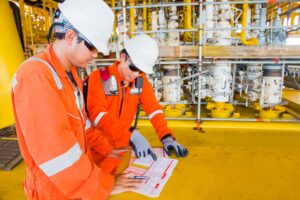Understanding the Permit to Work Procedure in High-Risk Industries
Key Aspects of Permit to Work
When work is identified as high-risk, stringent controls are imposed. Individuals involved in the work are responsible for adhering to the safety measures outlined in the permit. These measures prevent unauthorised activities and ensure that the job is done safely. Continuous training and monitoring are essential to maintain the effectiveness of this system.

Components of a Permit to Work Document
A typical permit to work document will specify the nature of the work, the authorised personnel, work location, identified risks, existing safety measures, potential hazards, required precautions, and the permit’s validity duration.
Applications and Responsibilities
Permits are often required for tasks like working in confined spaces, railway work, handling asbestos, roofing, and any work involving naked flames. The person overseeing the authorised work is tasked with signing off the p ermit, confirming completion and safe re-acceptance of the site or machinery.
ermit, confirming completion and safe re-acceptance of the site or machinery.
Pingback: Confined spaces are a special area of health and safety regulations